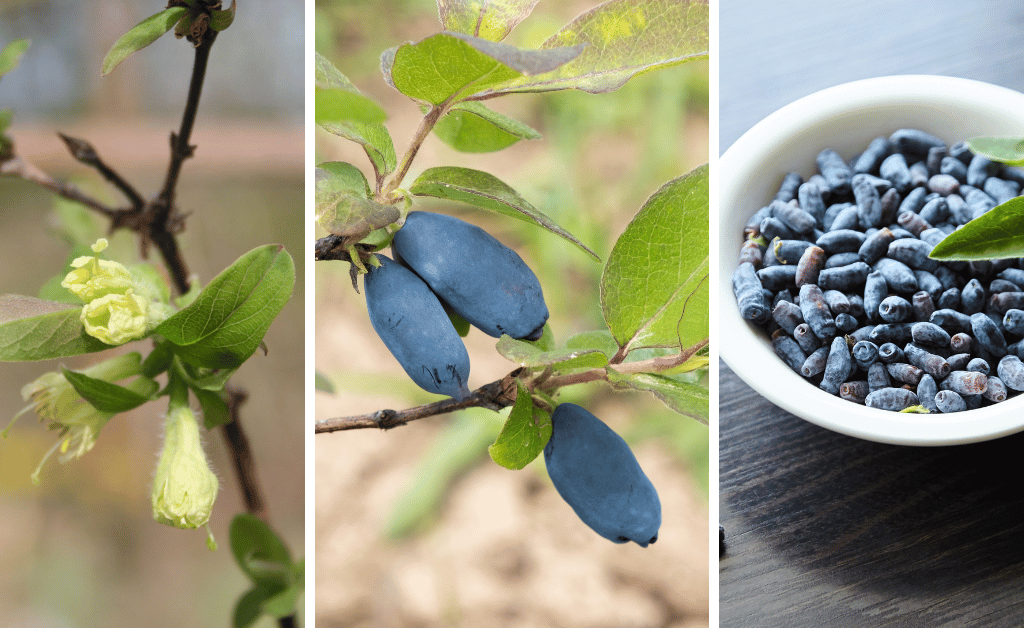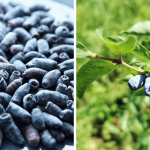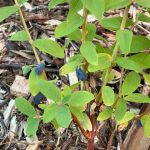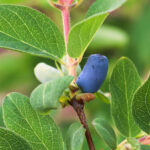Exploring the Native Habitat of Haskap Berries (Lonicera caerulea)

In the diverse world of berry cultivation, Haskap berries, scientifically known as Lonicera caerulea, emerge as a unique and intriguing species. Also commonly referred to as honeyberries or blue honeysuckle, these berries have piqued the interest of gardeners, horticulturists, and food enthusiasts alike. Beyond their rich flavor and nutritional value, the story of Haskap berries is deeply rooted in their native habitat – a tale that intertwines the natural world with cultural heritage.
This article embarks on an exploratory journey to uncover the origins and native environments of Haskap berries. From the cold, temperate forests of the Northern Hemisphere to the diverse ecological landscapes where these berries thrive, we delve into the geographical distribution that defines their natural existence. As we traverse continents and countries, we uncover the climatic conditions – ranging from the specific temperatures and soil types to the USDA zones – that have shaped the growth and characteristics of these resilient berries.
Beyond the botanical and environmental aspects, the Haskap berry holds a significant place in the cultural tapestry of the regions it originates from. Its historical use, traditional significance, and the role it plays in local ecosystems offer a rich narrative that goes beyond mere cultivation. This exploration is not just about understanding a berry; it’s about appreciating the symbiosis between nature and culture, and how one small berry can encapsulate a vast array of environmental and human stories.
Geographical Distribution of Haskap Berries
The Haskap berry is a plant of remarkable adaptability and resilience, thriving predominantly in the cooler climates of the Northern Hemisphere. This widespread geographical distribution not only speaks to the hardiness of the plant but also to its cultural significance across different regions.
Northern Hemisphere: A Dominant Habitat
Haskap berries have carved out a niche in the temperate zones of the Northern Hemisphere. In North America, particularly in Canada, they have gained popularity not only for their hardiness in the face of cold winters but also for their distinctively rich flavor. The Canadian climate, with its cold winters and warm summers, provides an ideal environment for Haskap berries, allowing them to flourish and produce bountiful harvests.
Asian Roots: From Russia to Japan
Tracing the roots of Haskap berries leads us to Asia, notably to Russia and Japan, where they hold a revered place in local cultures. In Russia, these berries are often found growing wild in forests, a testament to their ability to thrive in natural ecosystems. Japan, on the other hand, has a long history of cultivating Haskap berries, integrating them into various culinary delights and appreciating them for their health benefits. This deep connection to the land and its produce is a significant part of the cultural heritage in these regions.
European Presence: Wild and Cultivated
In Europe, Haskap berries tell a story of both wild growth and careful cultivation. Countries like Poland have embraced these berries, both in wild forests and in cultivated gardens. European climates, similar to those in Canada, offer the cool temperatures and well-drained soils that Haskap berries favor, enabling them to thrive.
Adaptability Across Climates
One of the most remarkable traits of Haskap berries is their adaptability to various environmental conditions. They are found thriving in USDA zones 2 through 7, demonstrating their ability to adapt to a range of climatic conditions. This adaptability makes them a versatile choice for gardeners and farmers across many regions. For a deeper understanding of how Haskap berries adapt to specific climates, especially in wet conditions like those found in USDA Zone 7, readers can explore “Can Fly Honeysuckle (Haskap) Thrive in a Wet, USDA Zone 7 Climate” on our website.
Climatic Conditions in Native Habitats of Haskap Berries
The native habitats of Haskap berries present a diverse climatic spectrum that is crucial to their growth and survival. These berries thrive in the cooler climates found in their native regions, which include parts of Russia, Japan, Northern China, and North America.
Temperature and Seasonality
- Haskap berries are well-adapted to regions with cold winters and moderate summers. The winter chill is not just endured but required for the proper development of buds, leading to successful flowering and berry production in spring and summer.
- These berries need a period of dormancy in winter, benefiting from the cold temperatures that promote maturation of buds. The arrival of warmer spring temperatures signals the end of this dormancy, initiating flowering and berry production.
Soil and Landscape Preferences
- The berries prefer well-drained, fertile soils, slightly acidic to neutral in pH, conditions often found in forested areas of their native habitats.
- They are commonly found in varied landscapes, from forest understories in Asia to open areas in North America, benefiting from the protection of larger trees or enjoying full sun.
Adaptation Across USDA Zones
- Haskap berries flourish in USDA hardiness zones 2 to 7. This range highlights their adaptability to different environmental conditions and their resilience in facing harsh winters and shorter growing seasons.
For further insights into the adaptability of Haskap berries in various climates, including detailed growth habits, you can refer to “Plant Profile: Haskap Berries – The Superberry of the North“.
Soil Preferences and Landscape Features of Haskap berries
The native environments offer a fascinating insight into the soil preferences and the landscapes these berries thrive in. These aspects are critical to understanding how Haskap berries have adapted over time to various regions and conditions, contributing significantly to their cultivation practices today.
Soil Types and Preferences
- Haskap berries are notably adaptable regarding soil conditions, but they show a marked preference for well-drained, loamy soils. These soils, rich in organic matter, provide the ideal environment for Haskap roots to proliferate, ensuring adequate nutrient uptake and water drainage.
- The slightly acidic to neutral pH range of their preferred soils mirrors the natural forest floors of their native habitats. This pH range helps in the efficient absorption of essential nutrients, crucial for their growth and fruit production.
Landscape and Environmental Adaptability
- In their native regions, Haskap berries can be found in a variety of landscapes, from the forest understories of Russia and Japan to the open, sunlit fields of North America. This versatility in habitat preference underscores the plant’s adaptability to different light and environmental conditions.
- The berries’ natural resilience to cold temperatures and their ability to thrive in USDA zones 2 through 7 underscore their adaptability to a broad range of climatic conditions. This resilience is a testament to their evolutionary history, allowing them to thrive in both shaded areas under the canopy of forest giants and in areas receiving full sunlight.
Significance of Native Soil and Landscape Features
- The native soil and landscape features play a significant role in the Haskap’s life cycle, influencing everything from the timing of bud break and flowering to the quality and quantity of fruit production. Understanding these native conditions is crucial for replicating similar environments in non-native regions, ensuring the successful cultivation of Haskap berries.
The adaptability of Haskap berries to a wide range of soil types and landscape features not only speaks to their robustness as a species but also to the opportunities they offer for cultivation in various global regions. By mimicking these native conditions, gardeners and farmers can maximize the growth potential of Haskap berries, enjoying the rich bounty these extraordinary plants have to offer.
Health Benefits and Nutritional Value of Haskap Berries
Haskap berries, often heralded as the new “superfruit,” are gaining recognition not just for their unique taste but also for their impressive array of health benefits and nutritional content. Rich in polyphenolic compounds, particularly anthocyanins, Haskap berries exhibit potent antioxidant activity, which plays a crucial role in their health-promoting properties.
Nutritional Profile
Haskap berries are a powerhouse of nutrition, offering a wide range of vitamins, minerals, and bioactive compounds. The table below highlights the key nutritional components of Haskap berries:
| Nutrient | Content | Benefit | Source |
|---|---|---|---|
| Vitamin C | 29-187 mg/100g | Supports immune system, skin health, and antioxidant protection | Rupasinghe et al., 2020 |
| Anthocyanins (mainly Cyanidin-3-O-glucoside) | 79-92% of total anthocyanin content | Offers antioxidant, anti-inflammatory, and neuroprotective effects | Rupasinghe et al., 2020 |
| Total Polyphenols | High | Contributes to reduced risk of chronic diseases | Rupasinghe et al., 2012 |
Antioxidant Capacity
The antioxidant capacity of Haskap berries is among the highest reported for fruits, surpassing many other berries known for their health benefits. Antioxidants are crucial for neutralizing free radicals, reducing oxidative stress, and preventing cellular damage. The following table compares the antioxidant capacity of Haskap berries with other common fruits:
| Fruit | Antioxidant Capacity (ORAC value) | Source |
|---|---|---|
| Haskap Berries | Highest among tested fruits | Rupasinghe et al., 2012 |
Health Benefits
Research has unveiled multiple health benefits associated with the consumption of Haskap berries, supported by both traditional uses and scientific studies:
1. Anti-inflammatory and Antidiabetic Effects
- Studies have shown that Haskap berries can reduce inflammation and improve markers of diabetes, making them beneficial for managing chronic conditions.
2. Neuroprotective Properties
- The high anthocyanin content, particularly Cyanidin-3-O-glucoside, has been linked to improved brain health and neuroprotective effects, potentially lowering the risk of neurodegenerative diseases.
3. Chemopreventive and Chemotherapeutic Potential
- Emerging research suggests that Haskap berries may have cancer-fighting properties, thanks to their ability to inhibit the growth of cancer cells without harming healthy cells.
4. Cardio-Protective Benefits
- The antioxidants in Haskap berries contribute to heart health by reducing blood pressure, cholesterol levels, and improving overall cardiovascular function.
Incorporating Haskap Berries into Your Diet
Haskap berries can be enjoyed fresh, frozen, or in various processed forms such as juices, powders, and supplements. However, it’s important to consider that processing methods can affect the bioactive content of Haskap products. Opting for minimally processed forms of Haskap berries is recommended to maximize their health benefits.
Haskap berries offer a remarkable blend of flavor and nutritional benefits, making them a worthy addition to a health-conscious diet. With ongoing research and increasing interest in their potential health benefits, Haskap berries are poised to become a staple in the realm of superfruits.
Adaptations and Survival Mechanisms of Haskap Berries
Haskap berries have developed a series of unique adaptations that enable them to thrive in their native habitats, which range from the cold regions of Siberia to the diverse climates of Japan and North America. These adaptations are crucial for their survival, resilience, and the continuation of their species in often harsh environments.
Key Adaptations
| Adaptation | Description | Benefit |
|---|---|---|
| Cold Tolerance | Haskap berries can survive extreme cold temperatures, significantly below freezing. | Allows survival and growth in harsh winter conditions, ensuring the early start of the growth cycle in spring. |
| Early Flowering and Fruiting | They begin their growth cycle early in spring, sometimes even when snow is still present. | Maximizes the short growing season, ensuring pollination and fruit development. |
| Soil Versatility | Adapted to a wide range of soil types, from heavy peat to high-calcium mountain soils. | Enables them to grow in diverse environments, increasing their distribution range. |
| Wet Conditions Tolerance | Unlike many fruit species, Haskap berries are more tolerant of wet conditions. | Allows them to prosper in damp environments, typical of their native habitats. |
Survival Mechanisms of Haskap Berries
Haskap berries’ survival mechanisms are directly tied to their adaptations. Their ability to endure freezing temperatures is not just about surviving the cold but also about taking advantage of the thawing cycle to kickstart their biological processes early. This early start is critical for the completion of their life cycle within the short growing seasons of their native regions.
The versatility in soil preference and tolerance to wet conditions suggests a complex root system capable of extracting nutrients efficiently across different soil types while avoiding common issues like root rot. This versatility also indicates a genetic diversity within the species that allows it to adapt to varying environmental conditions.
Cold Tolerance of Haskap Berries
Haskap berries exhibit an exceptional ability to withstand cold temperatures, far below what many fruit-bearing plants can tolerate. This trait allows them to emerge from dormancy earlier than many other species in spring, taking full advantage of the growing season. The survival of Haskap berries in temperatures as low as -47°C (-53°F) underscores their adaptation to the cold climates of Siberia and northern Japan, enabling them to be among the first plants to bloom and produce fruit each year.
Early Flowering of Haskap Berries
One of the most significant adaptations of Haskap berries is their early flowering period. This early bloom ensures that they can be pollinated by early-season insects, setting the stage for fruit development well before many other plants have begun to flower. This adaptation is crucial for survival in regions where the growing season is short and maximizes their reproductive success.
Soil Flexibility and Moisture Management
Haskap berries’ adaptability to a wide range of soil types and moisture levels is another key survival mechanism. They can grow in heavy peat soils typical of boreal forests, as well as in areas with high-calcium soils found in mountainous regions. This flexibility allows Haskap berries to occupy a variety of ecological niches. Additionally, their tolerance for wet conditions, unusual for many fruit species, enables them to thrive in damp environments without succumbing to root diseases that often plague other plants.
Contribution to Biodiversity and Ecosystems
The early flowering and fruiting of Haskap berries have a broader ecological impact, contributing significantly to local biodiversity. By providing an early source of nectar, they support pollinator populations at a critical time in the spring when few other food sources are available. Furthermore, the berries serve as an essential food source for wildlife, including birds and mammals, helping to sustain these populations and maintain ecological balance.
For further details on the adaptations and ecological role of Haskap berries, resources such as the comprehensive coverage on Wikipedia provide an in-depth look at these resilient plants. Additionally, the exploration of Haskap berries’ cultural and historical significance by Haskapa sheds light on their importance beyond just their survival mechanisms, illustrating the deep connection between these berries and the indigenous peoples of their native regions.
The Role of Haskap Berries in Biodiversity and Ecosystems
The ecological role of Haskap berries extends beyond their culinary and nutritional value, contributing significantly to the biodiversity and health of ecosystems where they are native.
Supporting Local Biodiversity
- The early blooming of Haskap berries provides an essential source of nectar for early-season pollinators such as bees and bumblebees. This symbiotic relationship is crucial for pollination and the subsequent production of a variety of fruits and seeds that sustain a wide range of wildlife.
Attracting Wildlife
- Beyond pollinators, Haskap berries serve as a food source for birds and mammals. The availability of ripe berries early in the season offers vital nourishment for these animals, especially in regions where food resources can be scarce in the spring.
Enhancing Ecosystem Health
- By contributing to a complex web of ecological interactions, Haskap berries play a role in maintaining the health and stability of ecosystems. Their presence supports the survival of various species, promoting biodiversity and ecological balance.
Conclusion
Haskap berries embody a remarkable convergence of cultural heritage, nutritional value, and ecological significance. Their unique adaptations to survive in harsh climates, coupled with their role in supporting biodiversity and ecosystem health, underscore the importance of these berries in their native habitats. As interest in Haskap berries continues to grow, understanding their native habitats, cultural significance, and ecological roles becomes crucial for their conservation and sustainable cultivation. By valuing and preserving the natural and cultural heritage of Haskap berries, we can ensure their continued contribution to biodiversity, human nutrition, and cultural practices for generations to come.




